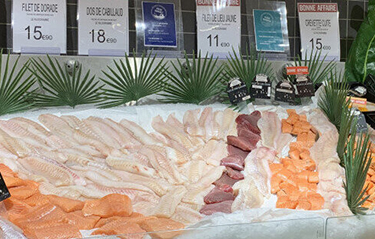The Norwegian Seafood Council (NSC) reported that Norway had a record-breaking July after an already record-breaking first-half of 2022.
The country exported NOK 11.6 billion (USD 1.18 billion, EUR 1.16 billion) worth of seafood in July, an increase of NOK 2.1 billion (USD 215 million, EUR 211 million) or 23 percent compared to July 2021. So far this year, the country has exported seafood valued at NOK 81.7 billion (USD 8.4 billion, EUR 8.2 billion), an increase of NOK 18.5 billion (USD 1.89 billion, EUR 1.85 billion), or 29 percent, over 2021.
“After a record-breaking first half of the year, July follows on as the best July month ever for Norwegian seafood exports. Since records began, July was also the strongest single month for salmon and trout. Despite the strong growth in the value of seafood exports so far this year, challenging times can still impact development going forward,” Norwegian Seafood Council Acting CEO Børge Grønbech said in a release.
Last year Norway saw its highest-ever seafood trade volume and value, exporting 3.1 million metric tons (MT) of seafood products worth NOK 120.8 billion (USD 12.4 billion, EUR 12.1 billion). The previous record was set in pre-pandemic 2019, when the country exported NOK 107.2 billion (USD 11 billion, EUR 10.8 billion) worth of seafood.
The big winner in July was salmon, which had its best month of the year in terms of export value. The country exported 96,500 MT of salmon with a value of NOK 8.7 billion (USD 891.5 million, EUR 874.4 million) in the month. While that volume is down 5 percent, relatively high salmon prices meant the value in creased by NOK 1.8 billion (USD 184.4 million, EUR 180.9 million), or 27 percent, compared to the same period of 2021.
The biggest markets for the products, according to the NSC, were Poland, Denmark, and France.
According to NSC Seafood Analyst Paul Aandahl, the volumes of salmon is likely to increase, while the price is likely to come down, based on seasonal patterns. Salmon prices spiked at the start of 2022, but experts are predicting the price will soften in late summer.
“We have seen the pattern of increased volume and lower prices in late summer and autumn in recent years,” Aandahl said. “For example, the export volume for fresh whole salmon in July this year was 17 percent higher than in June, and the price was 12 percent lower than in June this year.”
Of all the export markets, the U.K. saw the largest volume growth, according to NSC U.K. Seafood Envoy Hans Frode Kielland Asmyhr. The country’s import volume increased from 5,400 MT to 35,500 MT so far this year.
“Even with rising prices, British consumers prioritize buying seafood. Many Britons are keen to eat healthily, and it is pleasing to see that consumers stick with these good habits even with rising prices,” Asmyhr said. “The growth in the volume of salmon to Great Britain can also be seen in the context of somewhat lower production of salmon from Scotland.”
July marked a good month for prices of many other Norwegian seafood products as well, Grønbech said.
“The export price for several other species and products also reached record highs in July,” Grønbech said. “For example, clipfish of cod and saithe and frozen whole cod and haddock have achieved prices not seen before”
The export value of frozen cod, according to the NSC, reached NOK 255 million (USD 26.1 million, EUR 25.6 million) in July, despite a drop in production volume of 7 percent. That value increase was caused by a high export price for frozen whole cod, which reached NOK 54.12 (USD 5.54, EUR 5.44) per kilogram in July. China, the U.K., and Denmark were the largest markets for cod, with exports to the U.K. increasing significantly, according to the NSC.
“The export volume of frozen cod to the U.K. increased by as much as 62 per cent, to a total of 1,200 tonnes, with an export value of NOK 80 million [USD 8.1 million, EUR 8 million],” NSC Seafood Analyst Eivind Hestvik Brækkan said. He attributed part of that increase in demand to the recent introduction of an additional 35 percent tariff on Russian whitefish.
Fresh cod, as well, had a solid month despite it being the species' “low season.” Norway exported 2,500 MT of fresh cod, including fillets, reaching a value of NOK 123 million (USD 12.6 million, EUR 12.3 million) in July. That represents a volume increase of 6 percent and a value increase of 32 percent, or NOK 30 million (USD 3.07 million, EUR 3.01 million).
Trout sales, as well, hit a record in July. Norway exported 5,200 MT of trout with a value of NOK 531 million (USD 54.5 million, EUR 53.2 million) in the month. While the volume is down by 16 percent, the value spiked by 40 percent, or NOK 152 million (USD 15.6 million, EUR 15.2 million), compared to July 2021.
“For the trout, we see the same pattern as for salmon. Trout exports in July were also the highest-ever measured in value,” Aandahl said. “Lithuania, Armenia, and Kazakhstan were the biggest growth markets for trout in July.”
Despite the positive value performances across most exports, Grønbech tempered expectations as the seafood industry continues to be impacted by growing inflation.
“These are also challenging times for the Norwegian seafood industry, which is impacted by high inflation and cost growth,” Grønbech said. “Both factors have weakened most consumers' purchasing power. In addition, supply logistics out to the markets are challenging in several areas. These factors can influence the development of seafood exports going forward.”
Photo courtesy of the Norwegian Seafood Council







